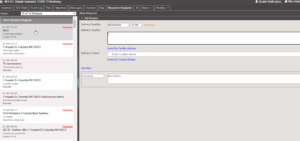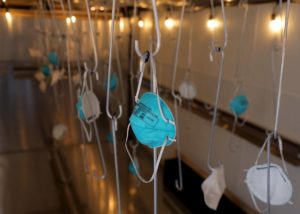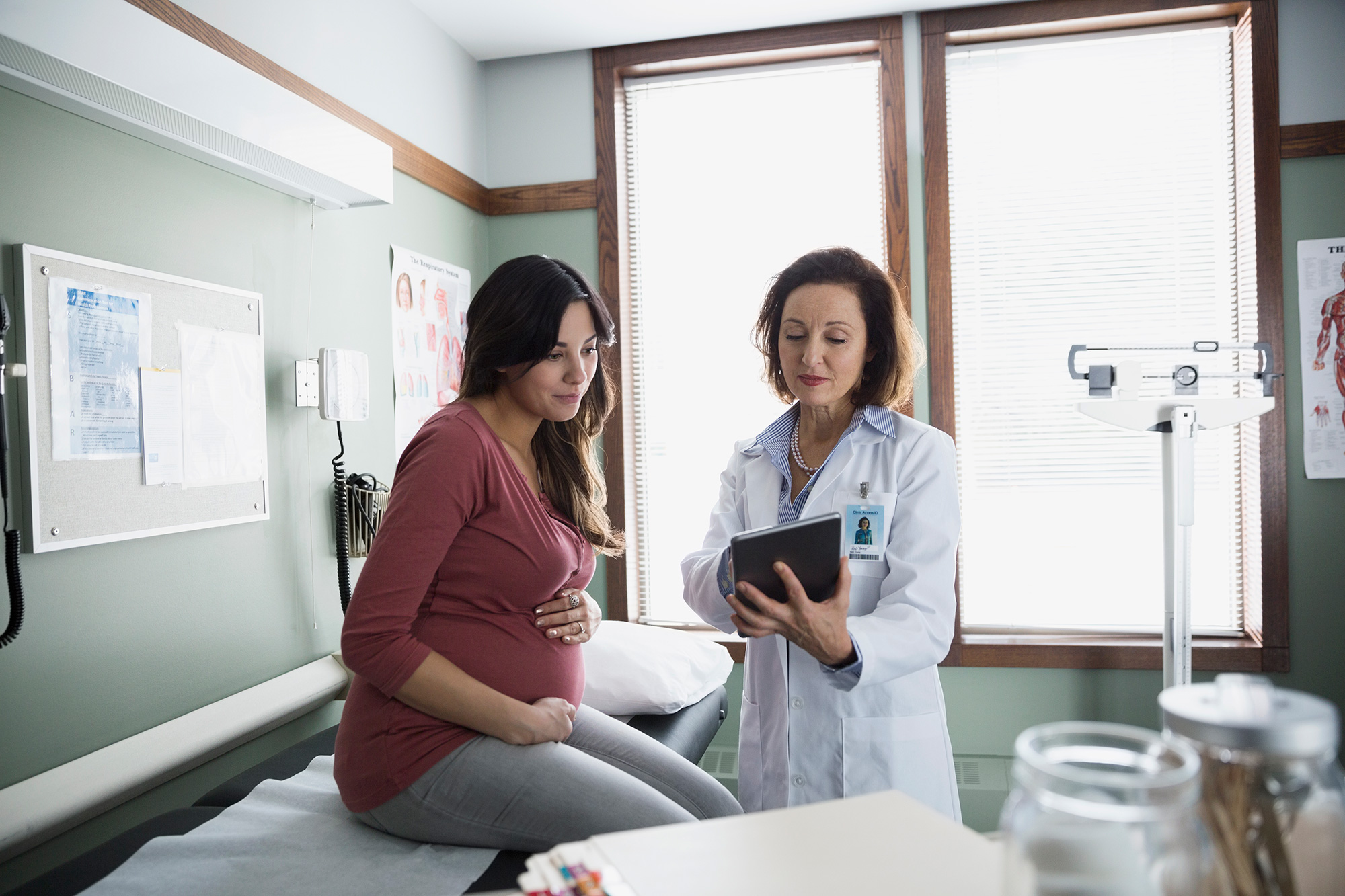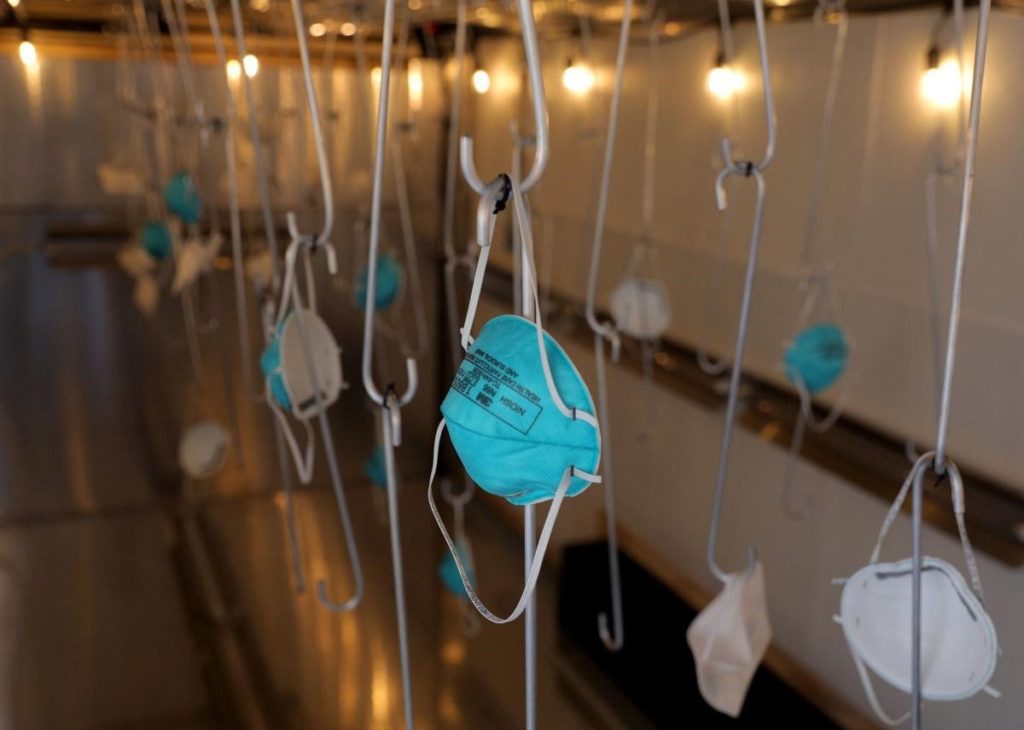Actions
Type
Topic
- COVID-19
- Disease Management
Tags
Issue Summary
Optimizing personal protective equipment, particularly N95 masks, is a priority for health care facilities throughout the state. With a nationwide shortage of PPE, hospitals no longer can rely on their standard ordering processes. While the state reserve has helped some hospitals that are in critical need, creative solutions for optimizing PPE still is needed. Through new practices and procedures, hospitals are doing exactly that.
Emerging Missouri Practices
Innovative thinking to optimize PPE has been demonstrated by hospitals throughout the state. The following examples and practices are highlighted to help hospitals learn from and possibly implement them within their facilities.
eICS Resource Requests

The University of Missouri Health Care uses the statewide communication platform, eICS, for supply allocation throughout the entire health care system.
The hospital’s emergency management and safety coordinator developed a process utilizing the eICS Resource Request feature to assist with optimization and availability of PPE and other supplies.
After extensive training and coordination with supply chain/distribution leadership and staff, all supplies were moved to one area for distribution by the supply chain staff. Leadership provided oversight of requests for their respective departments and requests were automatically prioritized by the system based on the date and time supplies were needed. The mobile app allowed for new request notifications to the supply chain staff, which allowed for a timely response. The system also allowed for the requester to monitor the status of the order.
Pat Van Hunnik
Safety & Emergency
Preparedness Coordinator
University of Missouri Health Care
vanhunnikp@health.missouri.edu
Properly Reusing PPE
Sullivan County Memorial Hospital established a practice for COVID-19 testing that allowed for optimizing PPE. They require patients to register the day before their test, and testing is done as a drive-through for one hour, Monday through Friday. A nurse, lab technician and bilingual registration clerk are assigned to the testing site. After each specimen collection, gloves are changed, and hands are sanitized. After all patients are seen for the day, the used gowns, face guards and N95 masks are sprayed down with a disinfectant solution. The items then are hung up to dry to be reused by those individuals the next day.
The hospital also developed a procedure to ensure optimization of N95 masks in the emergency department. When a patient arrives in the ED, is screened and COVID-19 is suspected, the patient is isolated and treated. After the patient is discharged, the PPE worn by the staff is discarded except for the N95 mask. The masks are placed in brown paper bags, which are labeled with the patient’s name, date of service and staff member’s name. If the test results are negative, staff continue to use the N95 mask. If the test is positive, the mask is discarded.
The brown paper bag process also is used if staff treat patients admitted to the hospital. A table is kept by the patient’s room, and any staff member who entered the room places the N95 mask in the bag, labeled with their name, once they leave the patient’s room. Whenever the staff member reenters the room, they use the same N95 mask from the bag. After the patient is discharged, the masks are disposed.
Amy Michael
Chief Operating Officer
Sullivan County Memorial Hospital
amymichael@scmhospital.org
UV Disinfection

The University of Missouri Health Care uses a robot to flash ultraviolet light to sanitize face masks in just 10 minutes. Clean masks then are put into fresh paper bags and marked with the date.
Two hospitals in St. Louis – Cardinal Glennon Children’s Hospital and St. Louis University Hospital – were using a microwave-like box to sanitize two N95 masks using UV light, which became very time consuming. Now, these two hospitals share a trailer built with aluminum panels on the walls and 30 strategically placed UV-C lightbulbs and hooks. The trailer can sanitize 80 masks in 10 minutes.
Key National Resources
3M has verified the UV light disinfection process can be done up to 10 times to increase the lifespan of the respirator.









